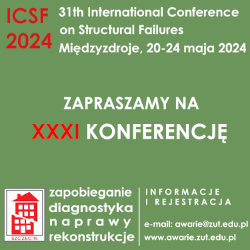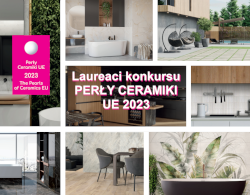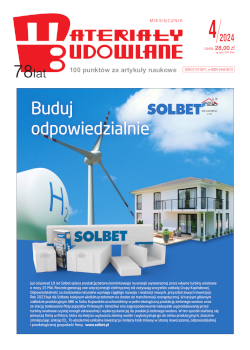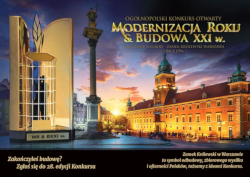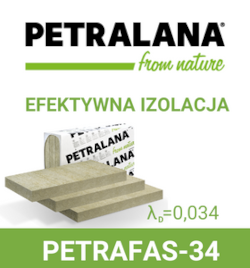Open Access (Artykuł w pliku PDF)
Influence of PM10 and PM2.5 concentration in the external environment on the internal air quality
mgr inż. Katarzyna Nowak-Dzieszko, Politechnika Krakowska im. Tadeusza Kościuszki, Wydział Inżynierii Lądowej
ORCID: 0000-0002-5484-7747
Adres do korespondencji: Ten adres pocztowy jest chroniony przed spamowaniem. Aby go zobaczyć, konieczne jest włączenie w przeglądarce obsługi JavaScript.
DOI: 10.15199/33.2024.01.07
Studium przypadku
Streszczenie. W związku z tym, że większość ludzi spędza w pomieszczeniach 80 – 90% czasu, bardzo istotne jest zrozumienie mechanizmu transportu zanieczyszczeń pomiędzy wnętrzem i otoczeniem budynku. Oczekuje się, że skuteczna wymiana powietrza w budynku pozwoli na utrzymanie dobrej jakości powietrza w pomieszczeniu, m.in. przez ograniczenie stężenia dwutlenku węgla, wilgotności powietrza, zanieczyszczenia chemicznego itp. Jednocześnie, w okresach bardzo dużego stężenia pyłów zawieszonych (PM) w atmosferze, zamierzona wymiana powietrza powoduje wzrost stężenia pyłów wewnątrz pomieszczenia. W artykule przeanalizowano wpływ warunków zewnętrznych na jakość powietrza wewnętrznego w dwóch pomieszczeniach edukacyjnych z grawitacyjnym systemem wentylacji. Analiza statystyczna otrzymanych odczytów pozwoliła określić opóźnienie czasowe, po jakim możemy się spodziewać wzrostu stężenia pyłów wewnątrz pomieszczeń. Wniosek ten może być wskazówką do sposobu użytkowania pomieszczeń w okresie podwyższonego poziomu stężenia pyłów zawieszonych.
Słowa kluczowe: jakość powietrza wewnętrznego; pyły zawieszone; PM10; PM2,5; indeks I/O.
Abstract. Since most of the people spend 80 – 90%of their time indoors, it is important to understand the mechanism of transport of pollutants between the interior and exterior of a building. It is expected that effective ventilation of the building interior will allow maintaining good air quality in the room, among others by limiting the concentration of carbon dioxide, air humidity, chemical pollution, etc.At the same time, during periods of very high PM concentration in the atmosphere, intentional air exchange causes an increase in dust concentration inside the room. The article analyzed the impact of external conditions on the quality of indoor air in two educational rooms with a gravity ventilation system. Statistical analysis of the obtained readings allowed us to determine the time delay after which we can expect an increase in internal concentrations. This conclusion may be an indication of how rooms should be used during periods of increased levels of suspended dust concentrations.
Keywords: indoor air quality; suspended dust; PM10; PM2.5; I/O index.
Literatura
[1] Cohen A, Anderson A, Ostro B, Pandey K, Krzyzanowski M, Kunzli N, Gutschmidt K, PopeA, Romieu I, Samet J, Smith K. The global burden of desease due the outdoor air polution. Journal of Toxicology and Environmental Health. 2005; Part A, 68: 1 – 7.
[2] Taylor J, Shrubsole C, Davies M, Biddulph, Das P, Hamilton I,Vardoulakis S,MavrogianniA, Jones B, Oikonomou E. The modifyingeffect of the building envelope on population exposure to the PM2.5 fromoutdoor sources,. Indoor Air. 2014; 24: 639 – 651.
[3] Arideep M, Madhoolika A. World air particulate matter: sources, distribution and health effects, Environmental Chemistry Letters. 2017; 15: 283 – 309.
[4] Quang T, He C, Morawska L, Knibbs L. Influence of ventilation and filtration on the indoor particle concentrations in urban office buildings. Atmospheric Environment. 2013; 79: 41 – 52.
[5] Spilak M, Karottki G, Kolaric B, Frederiksen M, Loft S, Gunnarsen L. Evaluation of building characteristicsin 27 dwellings in Denmark and the effect of usingparticle filtration units on PM2.5 concentrations. Building and Environment. 2014; 73: 55 – 63.
[6] Chen Ch, Zhao B. Review of relationship between indoor and outdoor particles: I/O ratio, infiltration factor and penetration factor.Atmospheric Environment. 2011; 45: 275 – 288.
[7] Almeida S, Canha N, Silva A, Freitas M, Pegas P, Alves C, Evtyugina M, Pio C. Children exposure to atmospheric particles in indoor of Lisbon primary schools. Atmospheric Environment. 2011; 45: 7594 – 7599.
[8] Bekierski D, Kostyrko K. The influence of Patriculate Matter PM2.5 on Indoor Air Quality: the Implementation of a New Assessment Method, Energies. 2021; 14: 6230.
[9] Monn Ch, Hogger D, FuchsA, JunkerM, Kogelschatz D, Roth N,Wanner H. Particulate matter less than 10 um (PM10) and fine particles less than 2.5 um(PM2.5): relationships between indoor, outdoor and personal concentrations. The Science of the Total Environment. 1997; 208: 15 – 21.
[10] Estakova A, Stevulova N, Kubincova L. Particulate matter investigation in indoor in indoor environment, Global NEST Journal. 2010; 12(1).
[11] Bartyzel J, Smoleń K. Ocena wpływu zanieczyszczeń pyłowych na zewnątrz budynków na jakość powietrza wewnątrz pomieszczeń, RAPORT, Wydział Fizyki i Informatyki Stosowanej AGH, 2017.
[12] Fromme H, Twardella D, Dietrich S, Heitmann D, Schierl R, Liebl B, RüdenH. Particulate matter in the indoor air of classrooms – exploratory results fromMunich and surrounding area, Atmospheric Environment, Volume 41, Issue 4, February 2007, Pages 854-866, https://doi. org/10.1016/j.atmosenv.2006.08.053
[13] Chithra VS, Shiva Nagendra SM. Indoor air quality investigations in a naturally ventilated school building located close to an urban roadway in Chennai, India, Building and EnvironmentVolume 54,August 2012, Pages 159-167, https://doi. org/10.1016/j. buildenv. 2012.01.016.
[14] Madureira J, Paciência I, Oliveira Fernandes E. Levels and Indoor – Outdoor Relationships of Size-Specific ParticulateMatter in Naturally Ventilated Portuguese Schools, Journal of Toxicology and Environmental Health, Part A Current Issues Volume 75, 2012 – Issue 22-23, https://doi. org/10.1080/15287394.2012.721177.
[15] Rozporządzenie Ministra Środowiska z 8 października 2019 r. zmieniające rozporządzenie w sprawie poziomów niektórych substancji w powietrzu.
Przyjęto do druku: 03.01.2024 r.
Materiały Budowlane 1/2024, strona 34-38 (spis treści >>)










